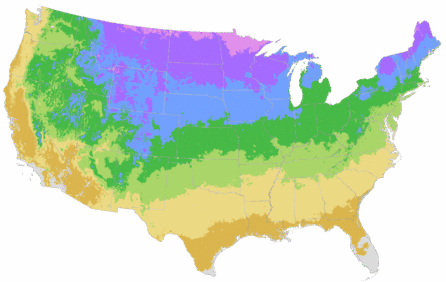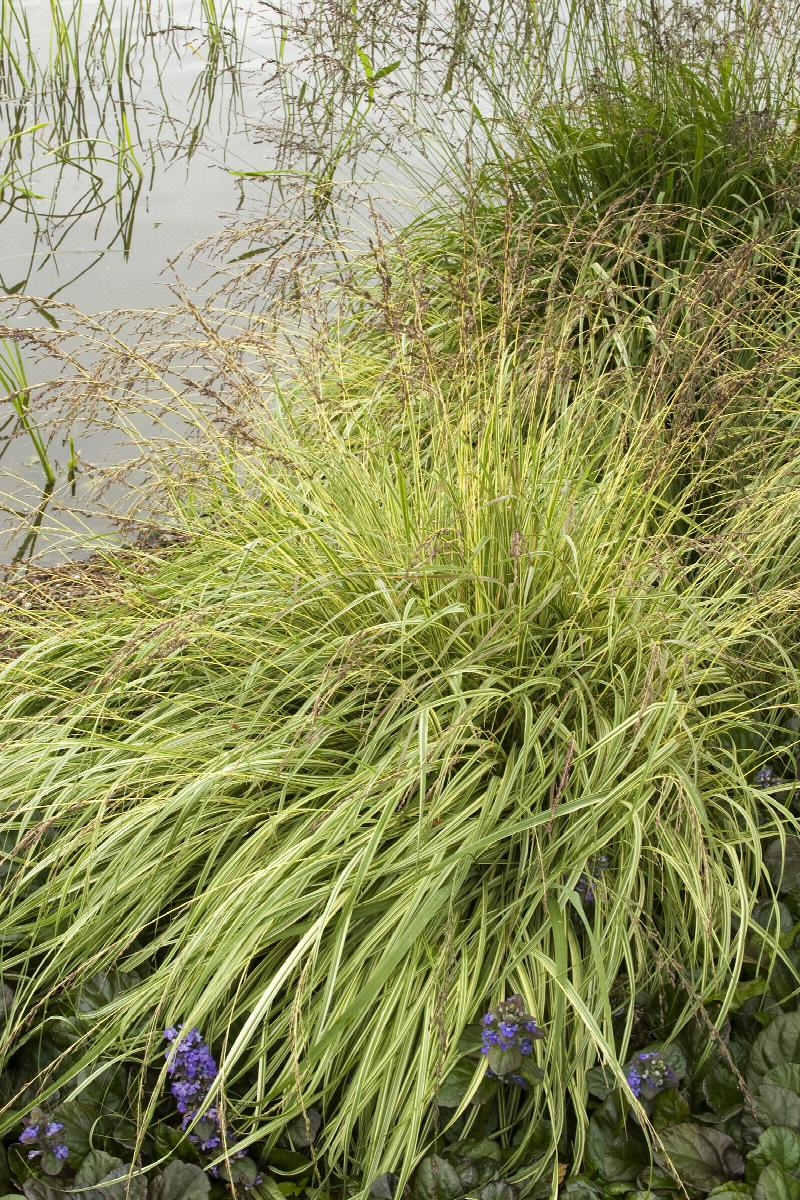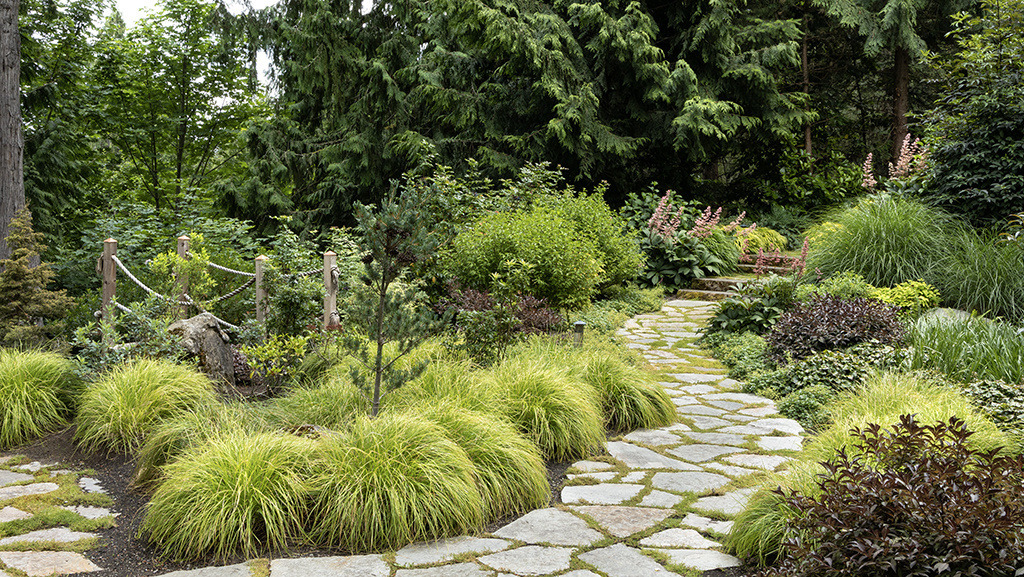Variegated Moor Grass
Molinia caerulea 'Variegata'
| Description | Highly ornamental clumps of green and creamy white striped blades, perfect for a continuous display as edging or a groundcover. Dainty spikes of gold flowers from late summer to fall. Grows in full sun in cool climates; best with some shade in hot, dry locations. |
|---|---|
| Light | Full sun, Partial sun |
| Watering | Keep soil surface moist, but not soggy. |
| Blooms | Midsummer to fall, persisting into winter. |
| Mature Size | Moderate growing; reaches 12 to 18 in. tall and wide. |
| Deciduous/Evergreen | Herbaceous |
|---|---|
| Special Features | Easy Care, Benefits Birds |
| Problems/Solutions | Deer Resistant |
| Growth Rate | Moderate |
| Growth Habit | Clumping |
| Landscape Use | Container, Ground Cover, Edging |
|---|---|
| Design Ideas | With its preference for acid soils, this Grass is ideal for the Pacific Northwest and Deep South. A great accent for the front of the border, or gang it around the edges of planters for a soft transition. Relaxed and sprawling, this Grass creates soft patches in wild gardens. Also attractive in sunny spots of shade gardens under conifers, where soil is acidic enough. Also does well on banks and borders. Short stature makes it good for city conditions. |
| Flower Color | Purple |
| Foliage Color | Variegated |
| Companion Plants | Camellia (Camellia); Rhododendron (Rhododendron); Daylily (Hemerocallis); Hydrangea (Hydrangea macrophylla); Crape Myrtle (Lagerstroemia) |
| Care | Provide enriched, moist, neutral to acidic soil. Water deeply, regularly during the first growing season to establish root system; once established, maintain evenly moist soil. Provide some shade and ample water in hot, arid locations. Remove old, faded foliage before new leaves emerge. Divide clumps every 2 to 3 years in early spring. |
|---|
| Lore | Moor grass was used for thatching and straw for livestock in early agricultural communities of northern Europe. |
|---|
This Plant's Growing Zones: 3-9

Your USDA Cold Hardiness Zone: 8
Good to grow!
Buy Online
Your plant(s) will ship to the garden center you choose as soon as they meet our quality standards and the garden center schedules a shipment. This can be as little as 21 days, but may take longer depending on the plant growth and your garden center's scheduled shipments.
Please note, not all garden centers participate as delivery locations for online orders.
Buy Locally
This plant may be available in these stores:
Due to the seasonal nature of plants, availability at your local garden center is not guaranteed. Give them a call before visiting. Please note, not all garden centers participate as delivery locations for online orders.
-
Gray's Garden Center 737 W. 6th Ave.
Eugene, Oregon 97402 -
Johnson Brothers Greenhouses 91444 Coburg Road
Eugene, Oregon 97408 -
Lowe's 3595 West 11th Avenue
Eugene, Oregon 97402
About Us
We have been pioneers and craftsmen in the art of growing plants for nearly
100 years. Since our founding in Southern California by Harry E. Rosedale, Sr.
in 1926, we have been absolutely dedicated and obsessed with quality.
We have been pioneers and craftsmen in the art of growing plants for nearly 100 years. Since our founding in Southern California by Harry E. Rosedale, Sr. in 1926, we have been absolutely dedicated and obsessed with quality.

